欢迎
我是王若泉,目前在费米实验室任博士后研究员,主攻粒子物理与宇宙学理论。欢迎来到我的个人空间。
我生于山东淄博,高中毕业后来到上海,随后在美国罗格斯大学获得博士学位。我的发表记录可以从InspireHep上找到。(本领域一般不使用Google Scholar,如果去那里找的话会有很多遗漏)
页面左边有我的邮箱、推特、github和简历。你也可以在联系方式页面上寻找更多的关于我的联系方式的信息。
- 正反物质不对称的起源
- 电弱相变的动力学和信号
- Strong CP problem
- 暗物质的起源与探测
- 中微子质量的起源、中微子的相互作用以及探测
-
理论粒子物理与宇宙学,博士, 2017-2023
罗格斯大学
-
物理学,学士, 2013-2017
复旦大学
职业经历
基本信息:
- 博士论文: Electroweak (-like) phase transition: baryogenesis, strong CP, and light particles
- 博士生导师: David Shih教授、Keisuke Harigaya (張ヶ谷圭介) 教授 (芝加哥大学)
助教经历:
- Teaching assistant, Introduction to Cosmology, 444
- Teaching assistant, Analytical Physics, 123-124
- 本科论文: 手征量子电动力学中的因果律与CP破坏
- 本科生导师: 黄旭光教授、黄焕中教授
精选学术发表
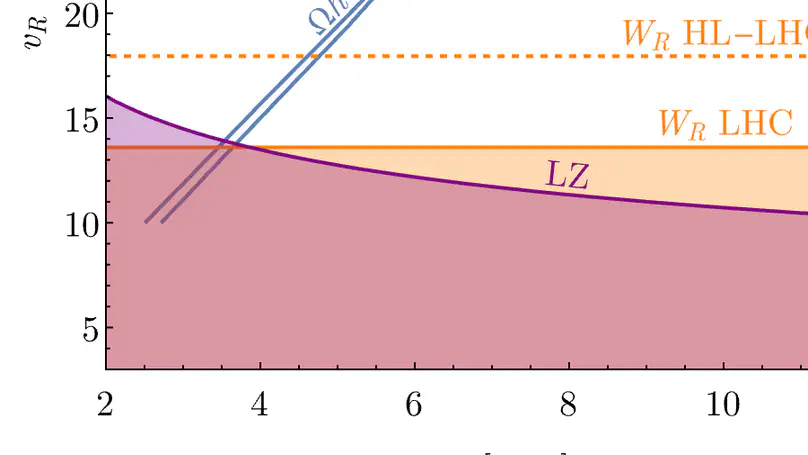
We consider weakly interacting massive particle (WIMP) dark matter in a Parity solution to the strong CP problem. The WIMP phenomenology can be drastically affected by the presence of Parity partners of the WIMP and electroweak gauge bosons. We focus on a Parity extension of $SU(2)_L$-doublet fermion dark matter, identify the viable parameter space, and derive the predictions of the theory. We find that the Parity symmetry breaking scale is bounded from above, with the bound given by $25-60$ $\rm TeV$, depending on whether or not dark matter and its Parity partner coannihilate with each other. The High-Luminosity Large Hadron Collider, future colliders, and direct and indirect detection experiments can probe the parameter space further, with correlated signal rates.
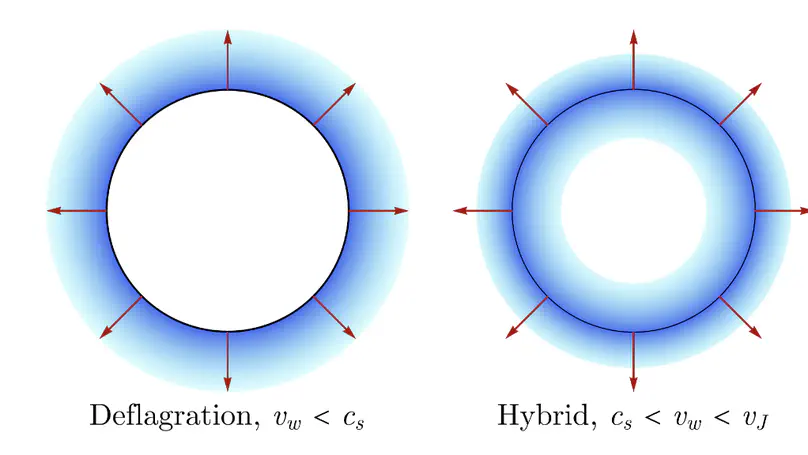
A precise determination of the bubble wall velocity $v_w$ is crucial for making accurate predictions of the baryon asymmetry and gravitational wave (GW) signals in models of electroweak baryogenesis (EWBG). Working in the local thermal equilibrium approximation, we exploit entropy conservation to present efficient algorithms for computing $v_w$, significantly streamlining the calculation. We then explore the parameter dependencies of $v_w$, focusing on two sample models capable of enabling a strong first-order electroweak phase transition: a $\mathbb{Z}_2$-symmetric singlet extension of the SM, and a model for baryogenesis with CP violation in the dark sector. We study correlations among $v_w$ and the two common measures of phase transition strength, $\alpha_n$ and $v_n/T_n$. Interestingly, we find a relatively model-insensitive relationship between $v_n/T_n$ and $\alpha_n$. We also observe an upper bound on $\alpha_n$ for the deflagration/hybrid wall profiles naturally compatible with EWBG, the exact value for which varies between models, significantly impacting the strength of the GW signals. In summary, our work provides a framework for exploring the feasibility of EWBG models in light of future GW signals.

Neutrino self-interactions beyond the standard model have profound implications in astrophysics and cosmology. In this work, we study an uncharted scenario in which one of the three neutrino species has a mass much smaller than the temperature of the cosmic neutrino background. This results in a relativistic component that significantly broadens the absorption feature on the astrophysical neutrino spectra, in contrast to the sharply peaked absorption expected in the extensively studied scenarios assuming a fully nonrelativistic cosmic neutrino background. By solving the Boltzmann equations for neutrino absorption and regeneration, we demonstrate that this mechanism provides novel sensitivity to sub-keV mediator masses, well below the traditional $\sim 1$–100 MeV range. Future observations of the diffuse supernova neutrino background with Hyper-Kamiokande could probe coupling strengths down to $g \sim 10^{-8}$, surpassing existing constraints by orders of magnitude. These findings open new directions for discoveries and offer crucial insights into the interplay between neutrinos and the dark sector.
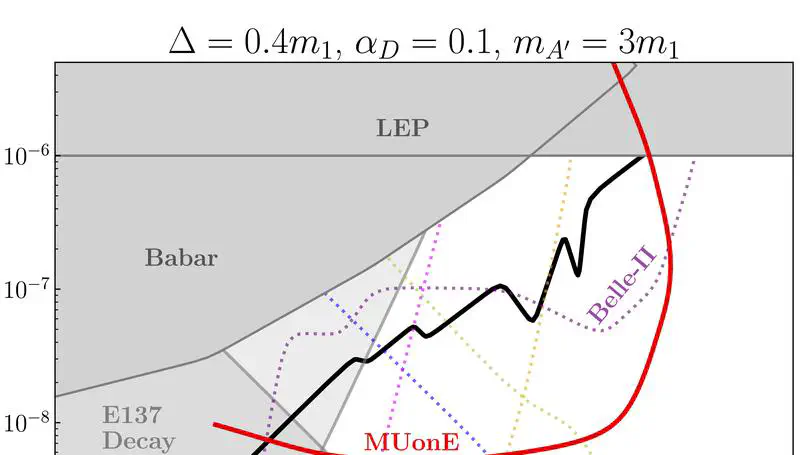
The MUonE experiment aims to extract the hadronic contribution to the muon anomalous magnetic moment from a precise measurement of the muon-electron differential scattering cross section. We show that MUonE can also discover thermal relic dark matter using only its nominal experimental setup. Our search strategy is sensitive to models of dark matter in which pairs of pseudo-Dirac fermions are produced in muon-nucleus scattering in the target, and the heavier state decays semi-visibly to yield dilepton pairs displaced downstream from the interaction point. This approach can probe sub-GeV thermal-relic dark matter whose cosmological abundance is governed by the same model parameters that set the MUonE signal strength. Furthermore, our results show that the downstream ECAL plays a key role in rejecting backgrounds for this search, thereby providing strong motivation for the MUonE to keep this component in the final experimental design.
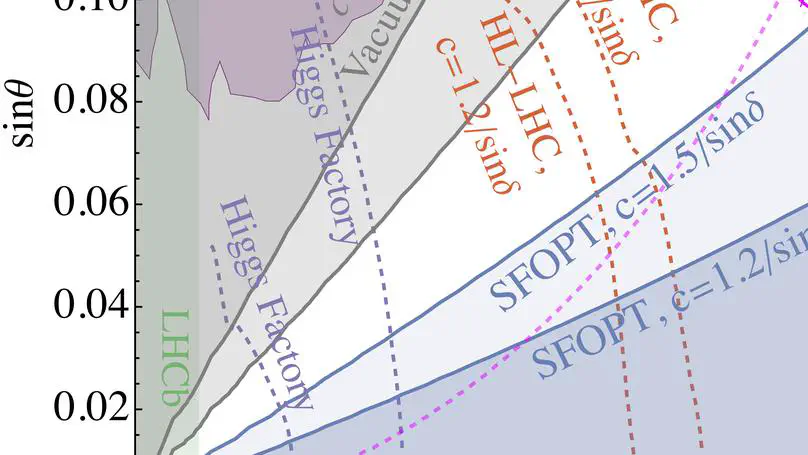
Axion-like particles (ALPs) can be naturally lighter than the electroweak scale. We consider an ALP that couples to the Standard Model Higgs to achieve the strong first-order electroweak phase transition. We discuss the two-field dynamics of the phase transition and the associated computation in detail and identify the viable parameter space. The ALP mass can be from the MeV to GeV scale. Baryon asymmetry can be explained by local baryogenesis without violating the electron electric dipole moment bound. The viable parameter space can be probed through Higgs exotic decay, rare kaon decay, the electron electric dipole moment, and the effective number of neutrinos in the cosmic microwave background. The gravitational-wave signal is too weak to be detected.
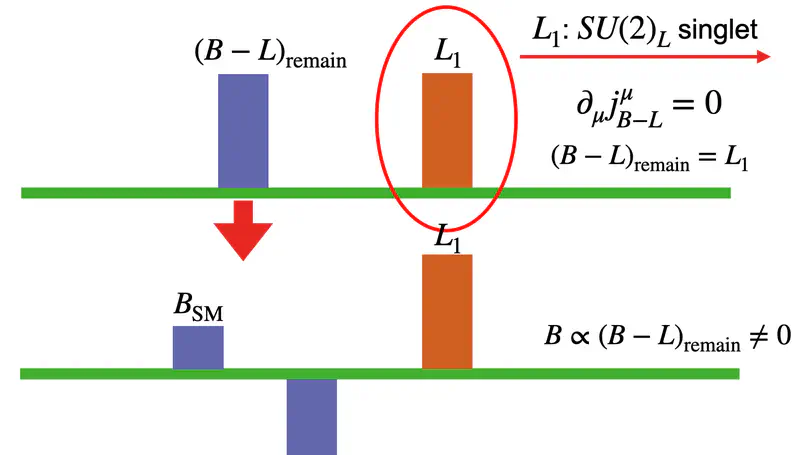
Space-time parity can solve the strong CP problem and introduces a spontaneously broken $SU(2)_R$ gauge symmetry. We investigate the possibility of baryogenesis from a first-order $SU(2)_R$ phase transition similar to electroweak baryogenesis. We consider a model with the minimal Higgs content, for which the strong CP problem is indeed solved without introducing extra symmetry beyond parity. Although the parity symmetry seems to forbid the $SU(2)_R$ anomaly of the $B-L$ symmetry, the structure of the fermion masses can allow for the $SU(2)_R$ sphaleron process to produce non-zero $B-L$ asymmetry of Standard Model particles so that the wash out by the $SU(2)_L$ sphaleron process is avoided. The setup predicts a new hyper-charged fermion whose mass is correlated with the $SU(2)_R$ symmetry breaking scale and hence with the $SU(2)_R$ gauge boson mass, and depending on the origin of CP violation, with an electron electric dipole moment. In a setup where CP violation and the first-order phase transition are assisted by a singlet scalar field, the singlet can be searched for at future colliders.
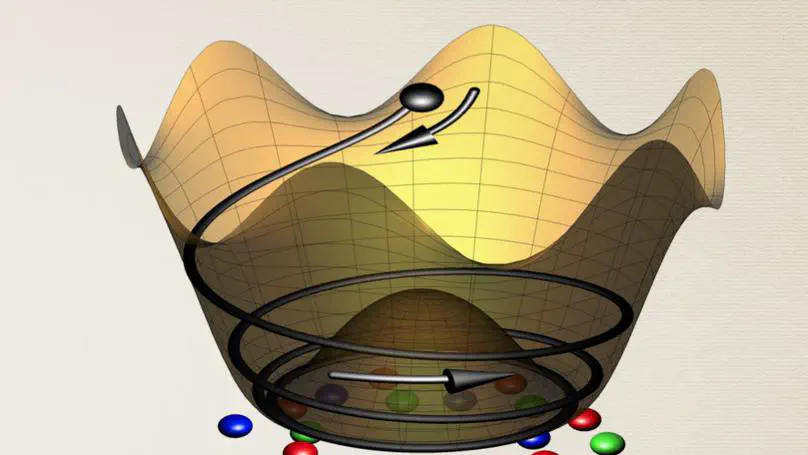
The baryon asymmetry of the universe may be explained by rotations of the QCD axion in field space and baryon number violating processes. We consider the minimal extension of the Standard Model by a non-Abelian gauge interaction, $SU(2)_R$, whose sphaleron process violates baryon number. Assuming that axion dark matter is also created from the axion rotation by the kinetic misalignment mechanism, the mass scale of the $SU(2)_R$ gauge boson is fixed as a function of the QCD axion decay constant, and vise versa. Significant portion of the parameter space has already been excluded by new gauge boson searches, and the high-luminocity LHC will further probe the viable parameter space.
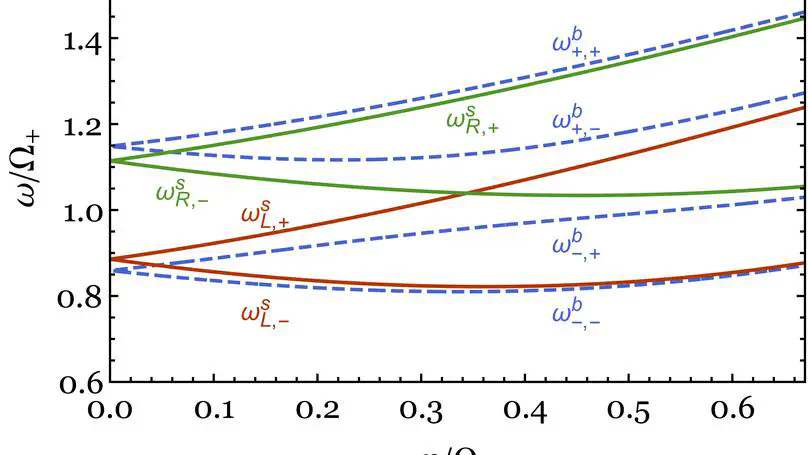
We propose a framework where a phase transition associated with a gauge symmetry breaking that occurs (not far) above the electroweak scale sets a stage for baryogenesis similar to the electroweak baryogenesis in the Standard Model. A concrete realization utilizes the breaking of $SU(2)_R \times U(1)_X \rightarrow U(1)_Y$. New chiral fermions charged under the extended gauge symmetry have nonzero lepton numbers, which makes the $B-L$ symmetry anomalous. The new lepton sector contains a large flavor-dependent CP violation, similar to the Cabibbo-Kobayashi-Maskawa phase, without inducing sizable electric dipole moments of the Standard Model particles. A bubble wall dynamics associated with the first-order phase transition and $SU(2)_R$ sphaleron processes generate a lepton asymmetry, which is transferred into a baryon asymmetry via the ordinary electroweak sphaleron process. Unlike the Standard Model electroweak baryogenesis, the new phase transition can be of the strong first order and the new CP violation is not significantly suppressed by Yukawa couplings, so that the observed asymmetry can be produced. The model can be probed by collider searches for new particles and the observation of gravitational waves. One of the new leptons becomes a dark matter candidate. The model can be also embedded into a left-right symmetric theory to solve the strong CP problem.